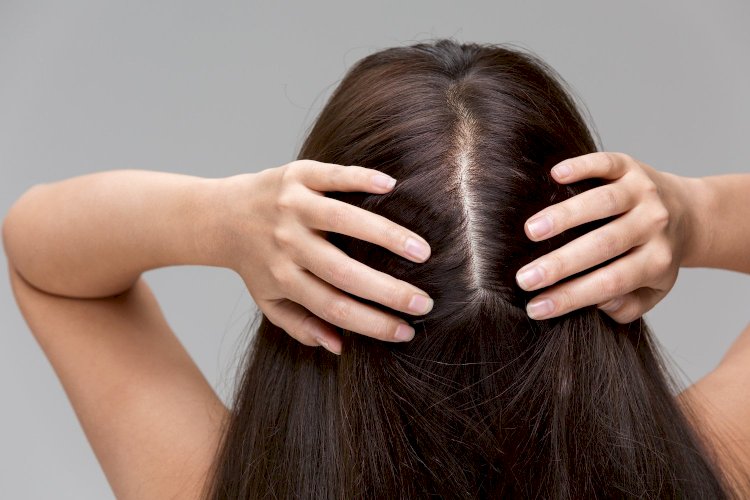What Is Behind The Hair Loss: The Science Of Hair
Hair is an important part of your look for men and women. Why should you care for them? Here are the reasons.

What To Know About Hair?
More complex than it appears on the surface is hair. It also helps to transmit sensory information as well as create gender identification as we all know that it not only plays a vital role in the appearance of both men and women.
The Origins of Hair
A developing foetus has all of its hair follicles formed by week 22. There are about 5 million hair follicles on the body at this stage of life. With one hundred thousand of those follicles residing on the scalp, there are a total of one million on the head. To state the fact as we do not generate the new hair follicles anytime it is during our lives, that this is the largest number of hair follicles a human will ever have.
As they grow from childhood to adulthood, most people will notice that the density of scalp hair is reduced. Our scalps expand when we grow is the reason behind this.
Hair Follicles
There are two distinct structures for hair that are firstly the follicle itself residing in the skin and then secondly the shafts which come as the visible part above the scalp.
Extending down into the dermis, the hair follicle is a tunnel-like segment of the epidermis. Coming with several layers where all have separate functions is the structure. Which contains capillaries or tiny blood vessels that nourish the cells, at the base of the follicle is the papilla.
Called the bulb, the living part of the hair is the very bottom part surrounding the papilla. Remarkably faster than any other cell in the body, the cells of the bulb divide every 23 to 72 hours.
Surrounding the follicle are two sheaths, an inner and outer sheath.
Forming the growing hair shaft, these structures also protect them.
Ending below the opening of a sebaceous gland and sometimes an apocrine scent gland the inner sheath follows the hair shaft. Continuing up to the gland is the outer sheath. Attaching below the glands to a fibrous layer around the outer sheath is a muscle called an erector pili muscle. It causes the hair to stand up which also causes the sebaceous gland to secrete oil when this muscle contracts.
Which conditions the hair and skin, the sebaceous gland is vital because it produces sebum. As we age, we begin to make less sebum whereas after puberty the body produces more sebum. As they age women have far less sebum production than men do.
Hair Shafts
Made in three layers, the hair shaft is made of a hard protein called keratin. The hair you see is not a living structure as the protein is dead.
The medulla is the inner layer. The outer layer is the cuticle and the second layer is the cortex. Making up the majority of the hair shaft is the cortex. Made of shingle-like overlapping scales is the cuticle which is a tightly formed structure made. Giving it its colour, it is both the cortex and the medulla that holds the hair’s pigment.
Hair Growth Cycle
Growing about 0.3 to 0.4 mm/day or about 6 inches per year is the hair on the scalp. Human hair growth and shedding are random and not seasonal or cyclical, unlike other mammals. There comes this as a random number of those hairs where it will be in one of the three stages of growth and shedding like anagen, catagen, and telogen at any given time.
Anagen
The active phase of hair is anagen. Dividing rapidly are the cells in the root of the hair. As the new hair forms, it pushes the club hair which has stopped growing or is no longer in the anagen phase up the follicle and thereby out.
The hair grows about 1 cm every 28 days during this phase.
Consequently, there is for two to six years, that the scalp hair stays in this active phase of growth.
As they have a short active phase of growth, some people have difficulty growing their hair beyond a certain length. People with very long hair have a long active phase of growth on the other hand. Explaining why they are so much shorter than scalp hair, is the hair on the arms, legs, eyelashes, and eyebrows that have a very short active growth phase of about 30 to 45 days.
Catagen
At any time, the catagen phase is a transitional stage and about 3% of all hairs are in this phase. For about two to three weeks, this phase lasts. Here it is observed that as the growth stops the outer root sheath shrinks and attaches to the root of the hair. Here this formation comes to be known as club hair.
Telogen
Usually accounting for 6% to 8% of all hairs, telogen is the resting phase. For hairs on the scalp this phase lasts for about 100 days and hairs on the eyebrow, eyelash, arm, and leg, it lasts longer. Therefore, we know the hair follicle is then completely at rest and then the club hair is completely formed during this phase. Revealing a solid, hard, dry, white material at the root is pulling out a hair in this phase. Finally, we find about 25 to 100 telogen hairs that are shed normally every day.
What's Your Reaction?





















